Abstract
Antigens extracted from leprosy bacilli obtained from infected human and armadillo tissues have been examined by immunodiffusion analysis with serum samples from lepromatous patients and with immune sera raised in rabbits. Using the best combinations of serum and antigen extracts, 12 antigenic constituents were found in the leprosy bacilli. Six of these were antigens common to all mycobacteria and nocardiae, 4 were specific to the leprosy bacillus and the position of 2 could not be determined. Groups ii and iii antigens (i.e. those associated with the slow growing and fast growing subgenera of mycobacteria) were not found in theleprosy bacillus, suggesting some relationship with M. vaccae and similar strains, in which these antigens are also missing. Lymphocyte transformation tests performed on lymph node cells of mice infected or immunized with leprosy bacilli also showed the leprosy bacillus to have a closer relationship with M. vaccae than with other mycobacteria.
Full text
PDF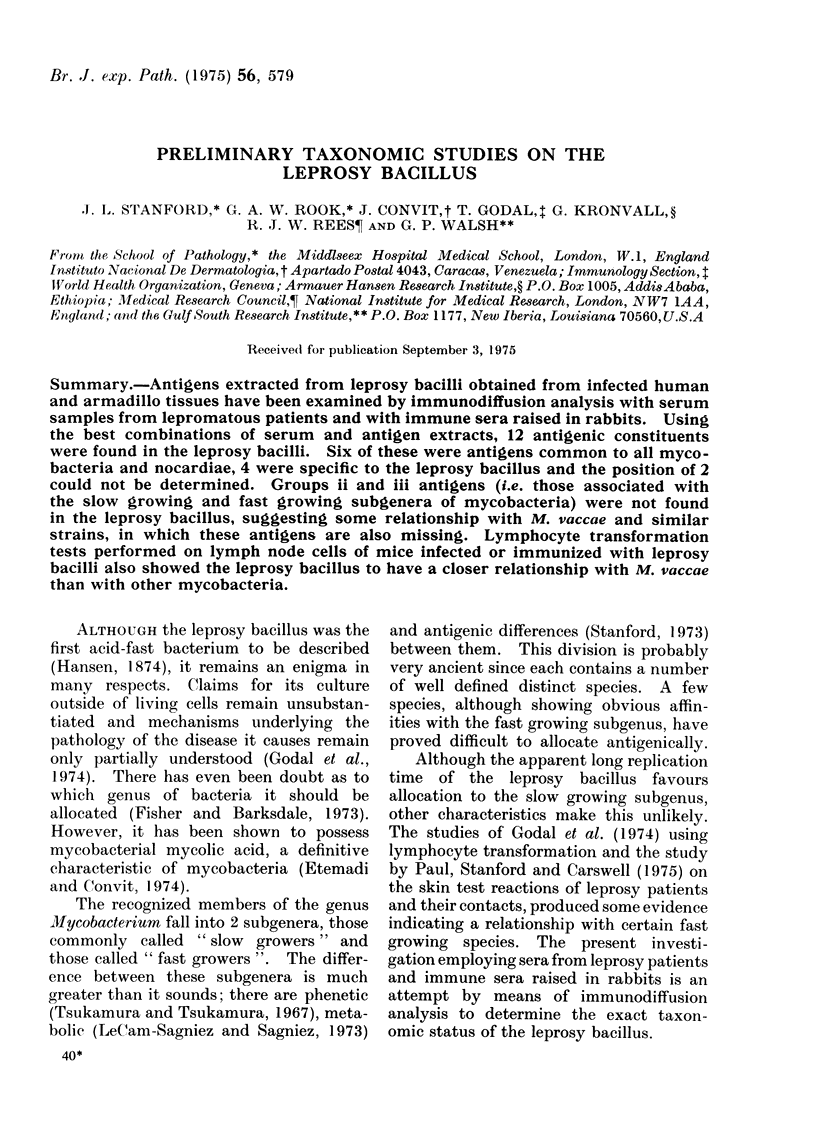
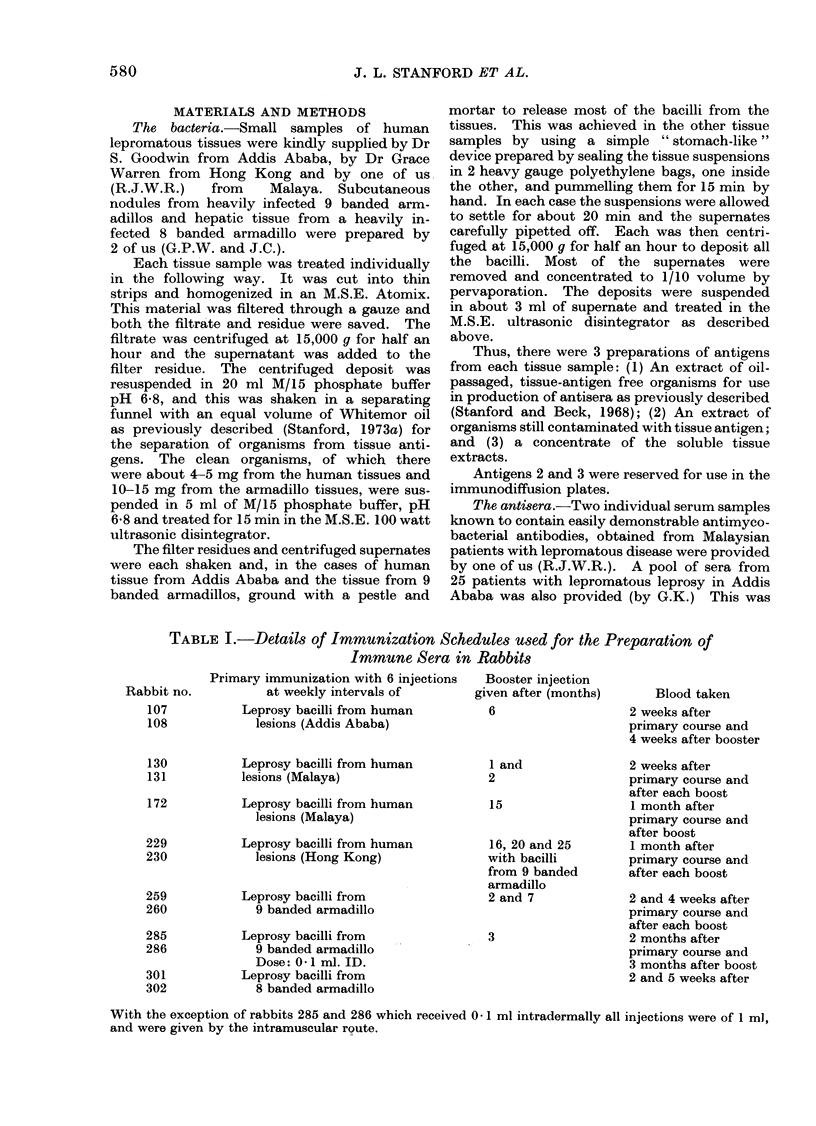
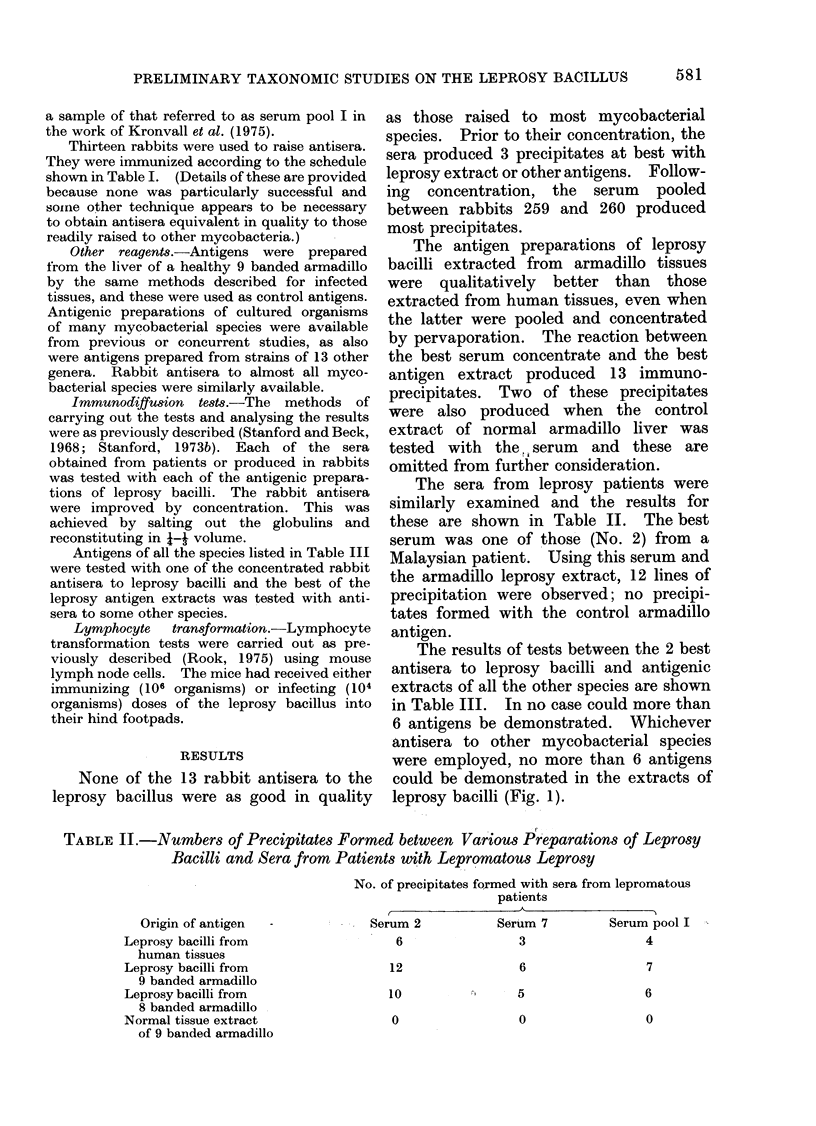
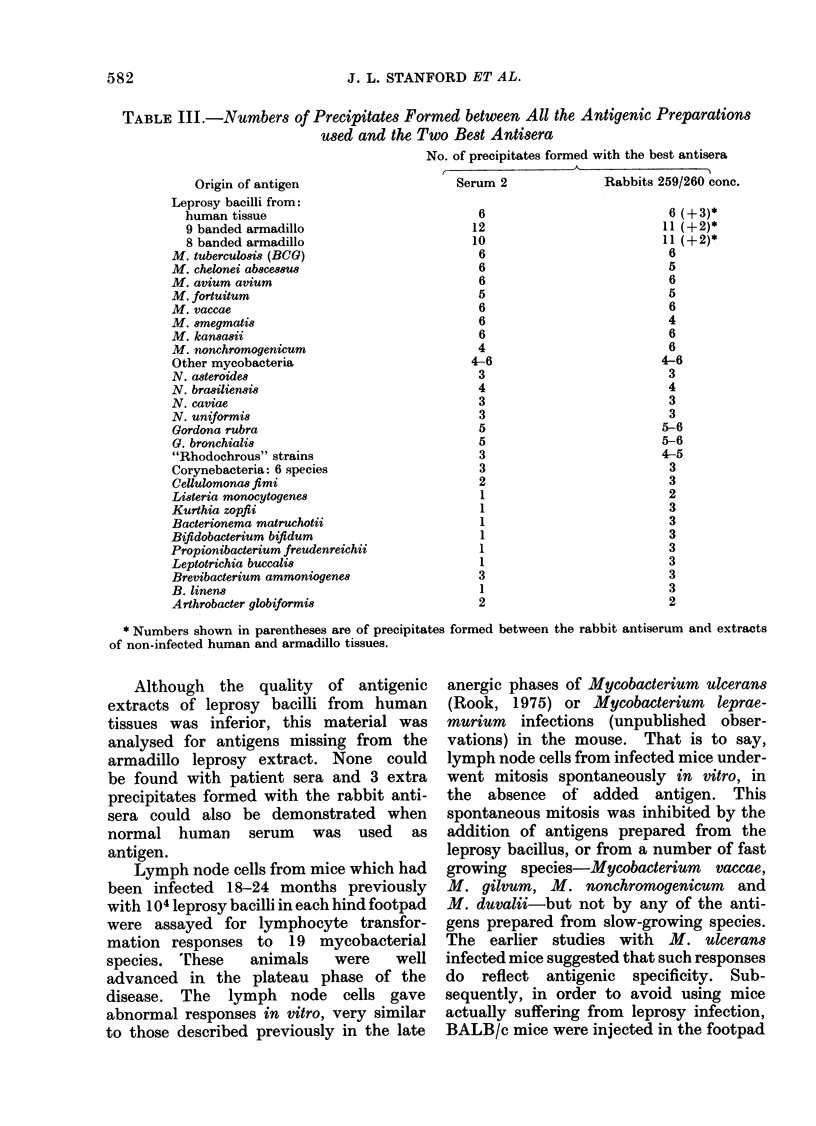
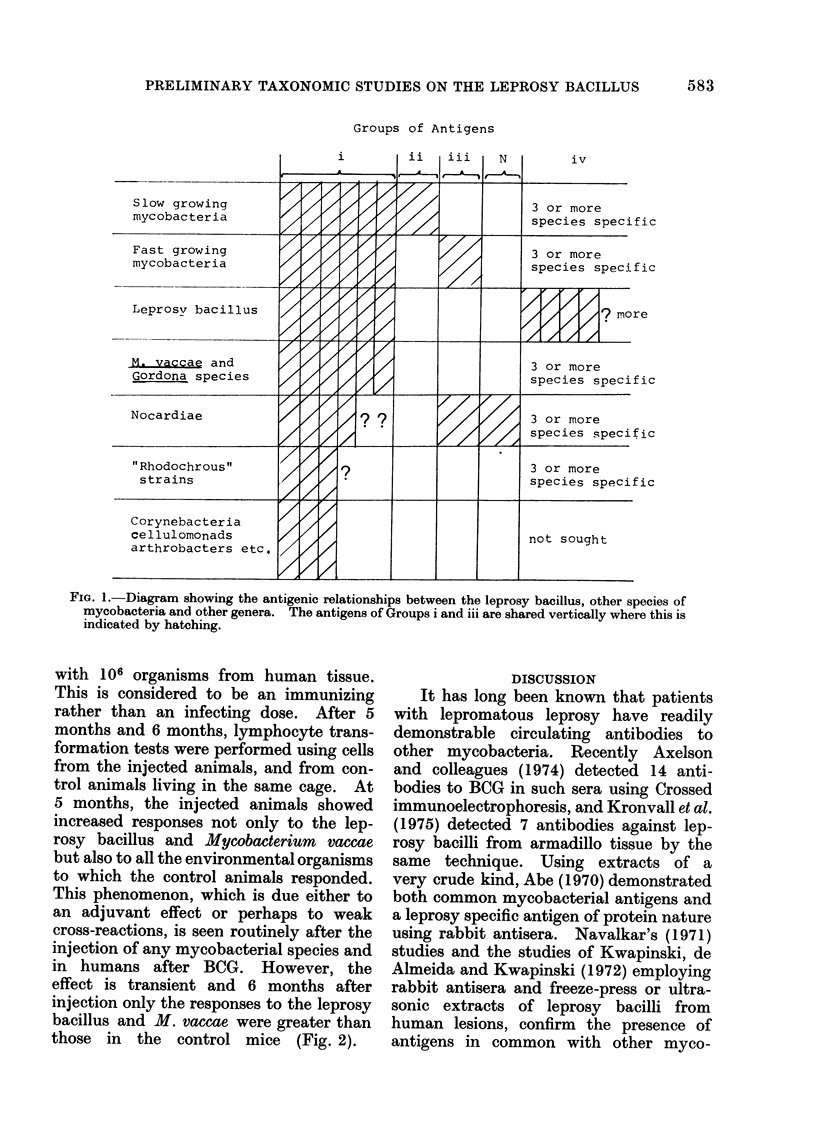
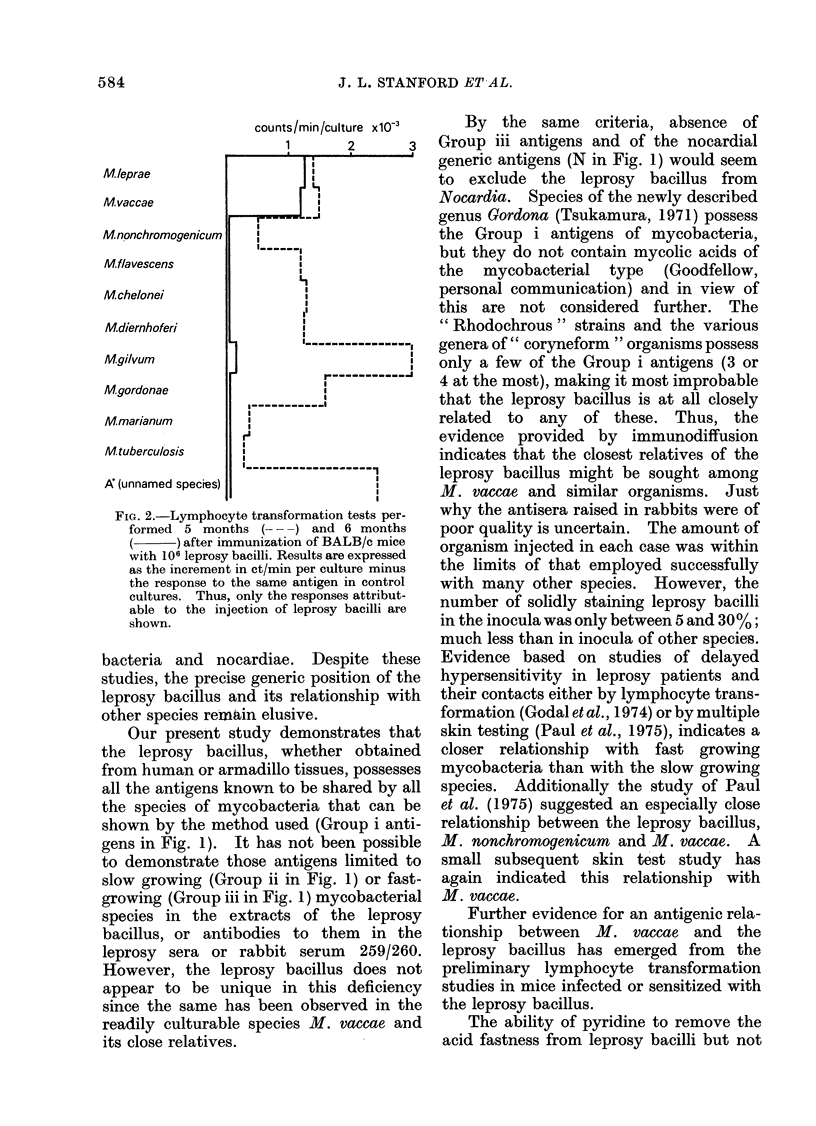
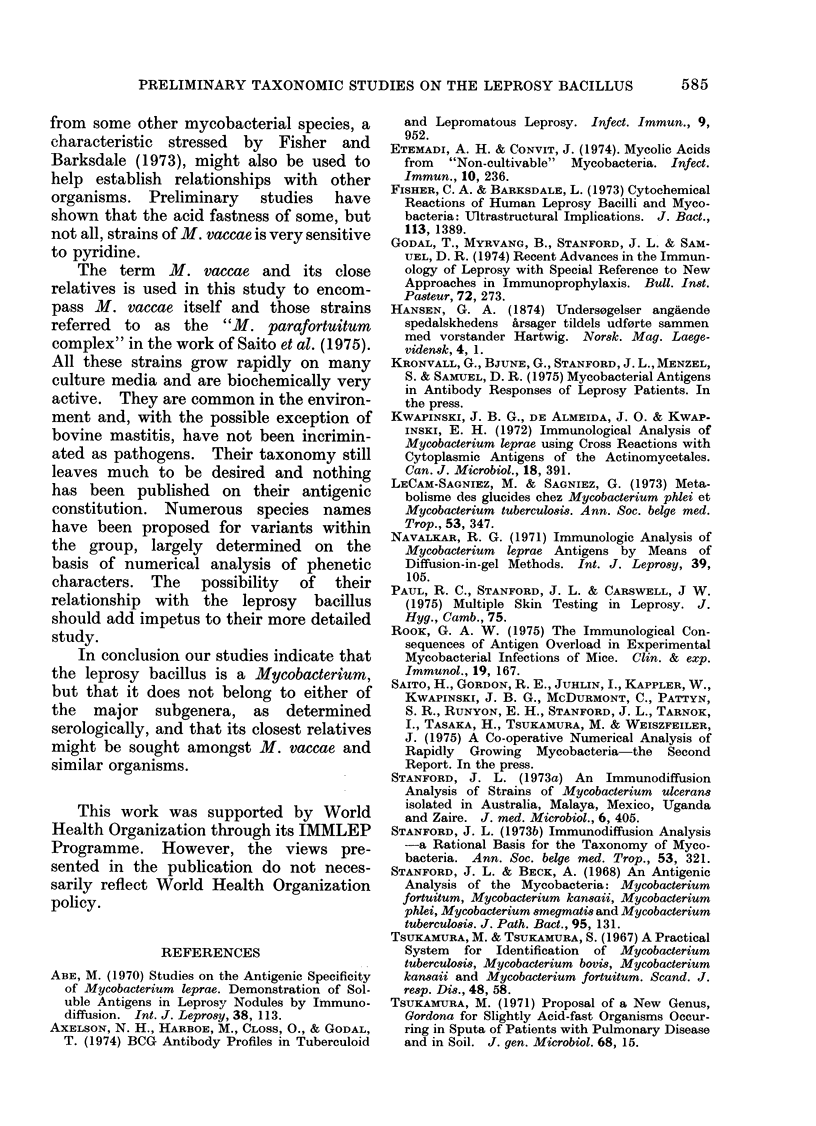
Selected References
These references are in PubMed. This may not be the complete list of references from this article.
- Abe M. Studies on the antigenic specificity of Mycobacterium leprae. I. Demonstration of soluble antigens in leprosy nodules by immunodiffusion. Int J Lepr Other Mycobact Dis. 1970 Apr-Jun;38(2):113–125. [PubMed] [Google Scholar]
- Axelsen N. H., Harboe M., Closs O., Godal T. BCG antibody profiles in tuberculoid and lepromatous leprosy. Infect Immun. 1974 May;9(5):952–958. doi: 10.1128/iai.9.5.952-958.1974. [DOI] [PMC free article] [PubMed] [Google Scholar]
- Etemadi A. H., Convit J. Mycolic acids from "noncultivable" mycobacteria. Infect Immun. 1974 Jul;10(1):236–239. doi: 10.1128/iai.10.1.236-239.1974. [DOI] [PMC free article] [PubMed] [Google Scholar]
- Fisher C. A., Barksdale L. Cytochemical reactions of human leprosy bacilli and mycobacteria: ultrastructural implications. J Bacteriol. 1973 Mar;113(3):1389–1399. doi: 10.1128/jb.113.3.1389-1399.1973. [DOI] [PMC free article] [PubMed] [Google Scholar]
- Kwapinski JB De Almeid, Kwapinski E. H. Immunological analysis of Mycobacterium leprae using cross-reactions with cytoplasmic antigens of the actinomycetales. Can J Microbiol. 1972 Apr;18(4):391–396. [PubMed] [Google Scholar]
- Le Cam-Sagniez M., Sagniez G. Metabolisme des glucides chez Mycobacterium phlei et Mycobacterium tuberculosis. Ann Soc Belg Med Trop. 1973;53(4):347–354. [PubMed] [Google Scholar]
- Navalkar R. G. Immunologic analysis of Mycobacterium leprae antigens by means of diffusion-in-gel methods. Int J Lepr Other Mycobact Dis. 1971 Apr-Jun;39(2):105–112. [PubMed] [Google Scholar]
- Stanford J. L. An immunodiffusion analysis of strains of Mycobacterium ulcerans isolated in Australia, Malaya, Mexico, Uganda and Zaire. J Med Microbiol. 1973 Aug;6(3):405–408. doi: 10.1099/00222615-6-3-405. [DOI] [PubMed] [Google Scholar]
- Stanford J. L., Beck A. An antigenic analysis of the mycobacteria, Mycobacterium fortuitum, Myco. kansasii, Myco. phlei, Myco. smegmatis and Myco. tuberculosis. J Pathol Bacteriol. 1968 Jan;95(1):131–139. doi: 10.1002/path.1700950116. [DOI] [PubMed] [Google Scholar]
- Tsukamura M. Proposal of a new genus, Gordona, for slightly acid-fast organisms occurring in sputa of patients with pulmonary disease and in soil. J Gen Microbiol. 1971 Sep;68(1):15–26. doi: 10.1099/00221287-68-1-15. [DOI] [PubMed] [Google Scholar]
- Tsukamura M., Tsukamura S. A practical system for identification of Mycobacterium tuberculosis, Mycobacterium bovis, Mycobacterium kansasii, and Mycobacterium fortuitum. Scand J Respir Dis. 1967;48(1):58–70. [PubMed] [Google Scholar]


